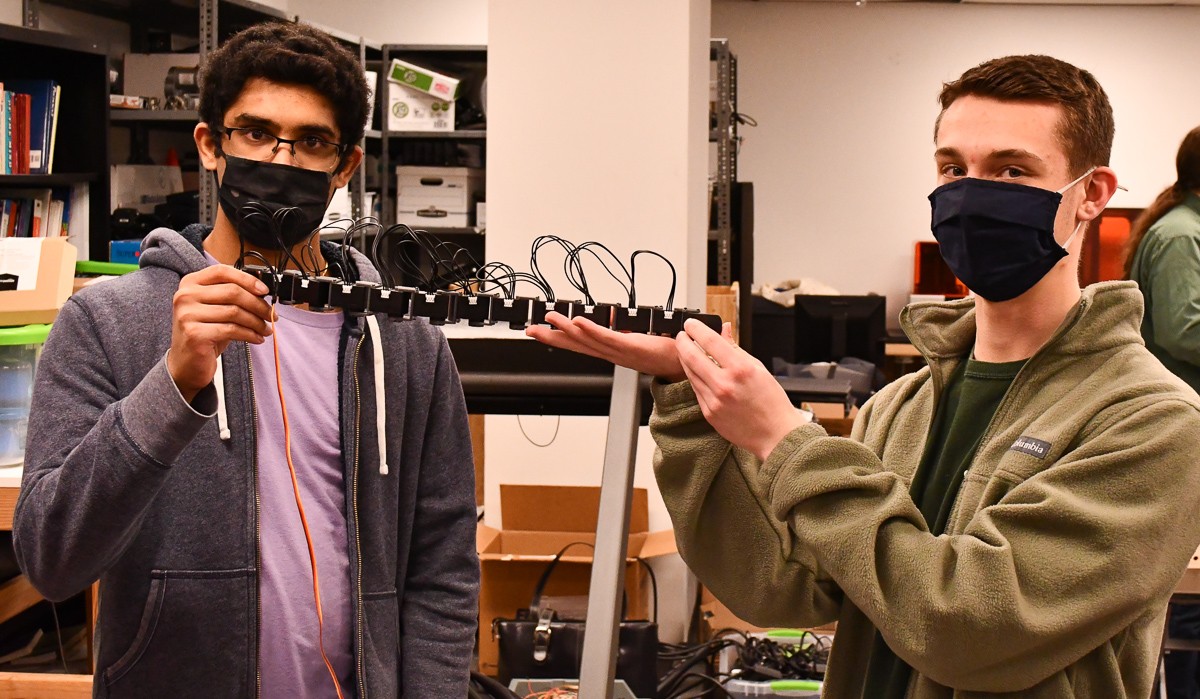
UC offers summer course on animal-inspired robotics
Biology Meets Engineering offers cross-training for students pursuing STEM careers
Manasi Kana knows that to become a veterinarian, she will have to be well versed in science.
The student at William Mason High School in Mason, Ohio, enrolled in the University of Cincinnati’s Biology Meets Engineering course, which gives students both at UC and Cincinnati-area high schools a chance to learn about both disciplines while they work on animal-inspired robotics projects.
The UC creators of Biology Meets Engineering are wrapping up a three-year National Science Foundation grant to develop and demonstrate a new curriculum drawing from both fields in UC’s College of Arts and Sciences and its College of Engineering and Applied Science. UC students take the class for course credit while faculty will offer a three-week course in June to introduce the concept to high school students.
“I feel like I should get to know more about technology, not just biology. That’s why I took this course as an introduction to engineering,” Kana said.
The course offers unique cross-training to help prepare students to pursue careers in STEM fields — science, technology, engineering or math.
“I think it’s a good example of how the two fields inform each other,” said UC professor Stephanie Rollmann, the principal investigator for the national grant.
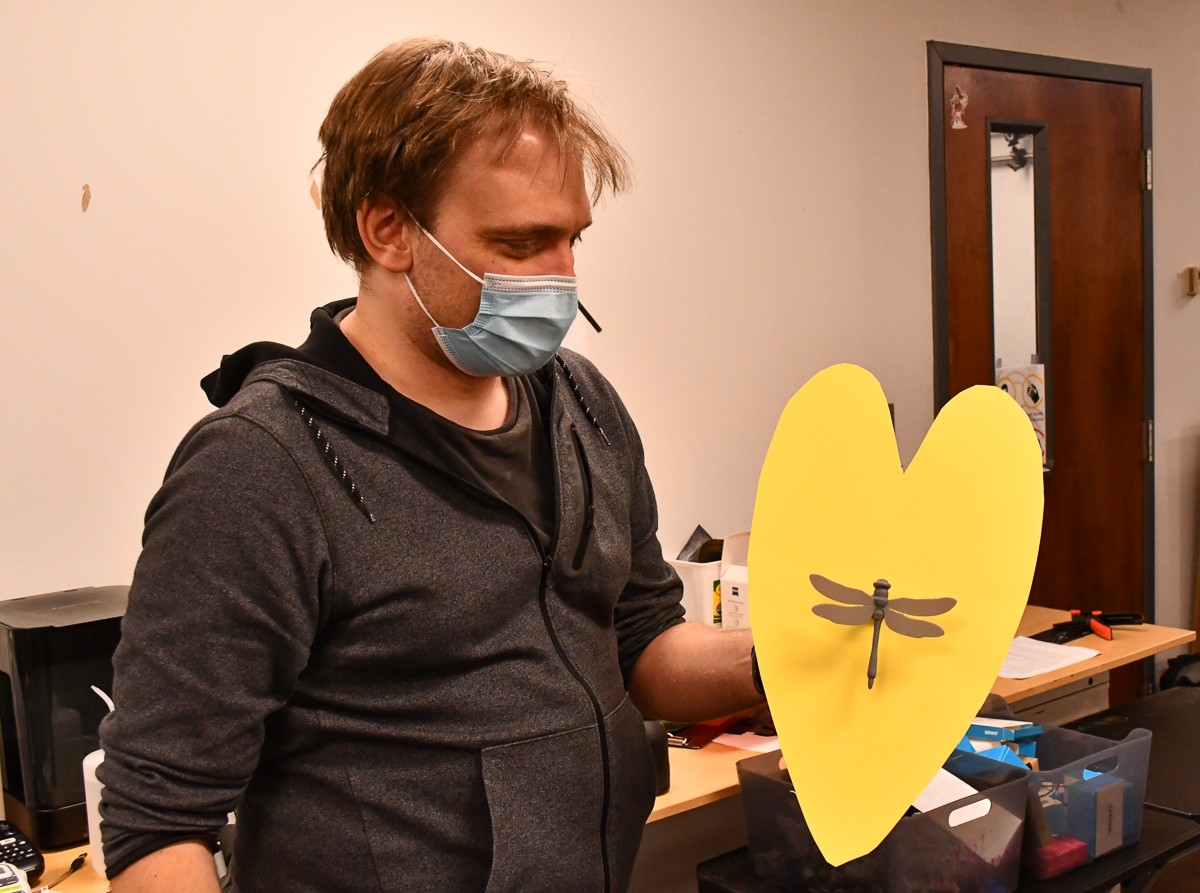
UC assistant professor Dieter Vanderelst holds up a 3D-printed dragonfly mounted to a construction paper leaf for an exercise in which students program robots to mimic a bat. Students programmed a robot to use sensors to distinguish the dragonfly from the background foliage just as bats can do using sonar in complete darkness. Photo/Michael Miller
UC assistant professor Dieter Vanderelst studies the extraordinary ability of bats to detect objects using sonar from their high-pitched calls. His research in 2019 demonstrated how big-eared bats’ sonar could thwart the camouflage of insects by hiding on leaves in the rainforest canopy.
For the Biology Meets Engineering class, Vanderelst uses 3D-printed dragonfly models to demonstrate how robots likewise can discern an insect from background foliage, in this case a leaf made of construction paper.
“Students will use handheld sonar devices to see if they can develop a strategy to identify the dragonfly from the background leaf,” he said. “They will be a bat for a few hours.”
The bats approach potential prey at an angle that allows their sonar to create a reflection. Vanderelst said a similar strategy should help students discern the plastic dragonfly from the background.
Vanderelst said some flowers have evolved specially shaped flowers that create a unique sonar signature to help nectar-loving bats find them during their nightly forays.
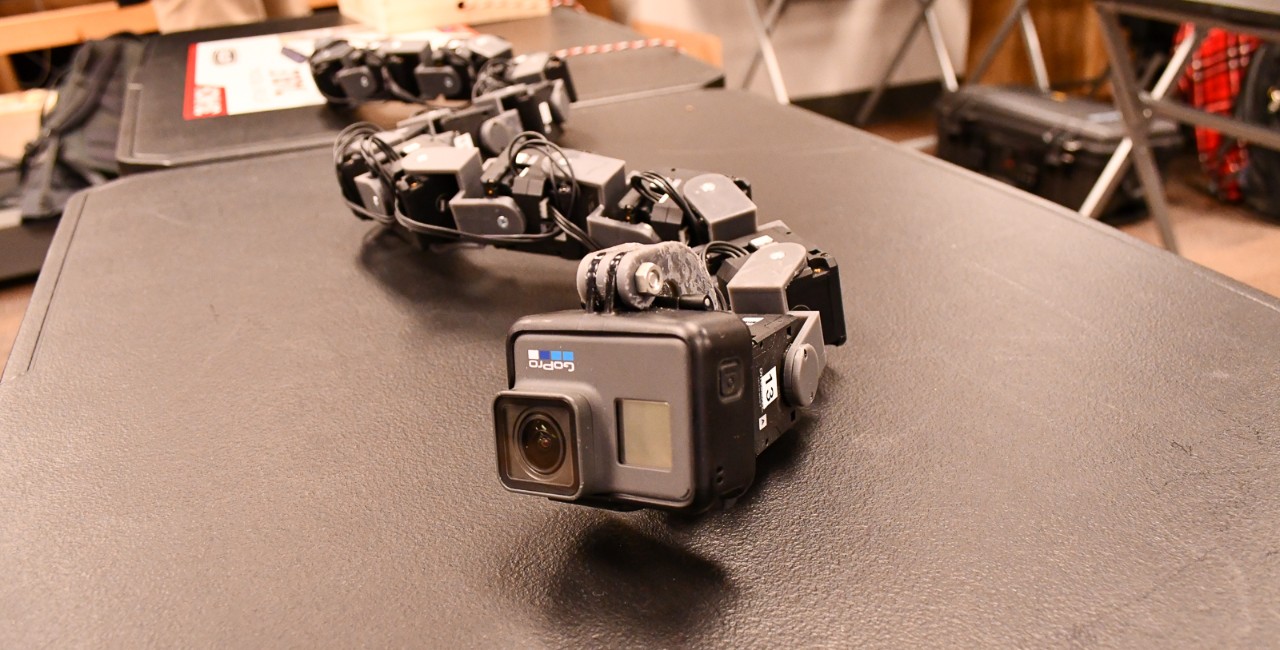
A programmable robot mounted with a camera can mimic different types of snake locomotion. Photo/Michael Miller
Students studied animal senses and how to apply them to robotic sensors using wheeled robots. During another exercise, UC alumnus and University of Akron biologist Henry Astley brought in programmable robotic snakes to understand the different ways snakes move.
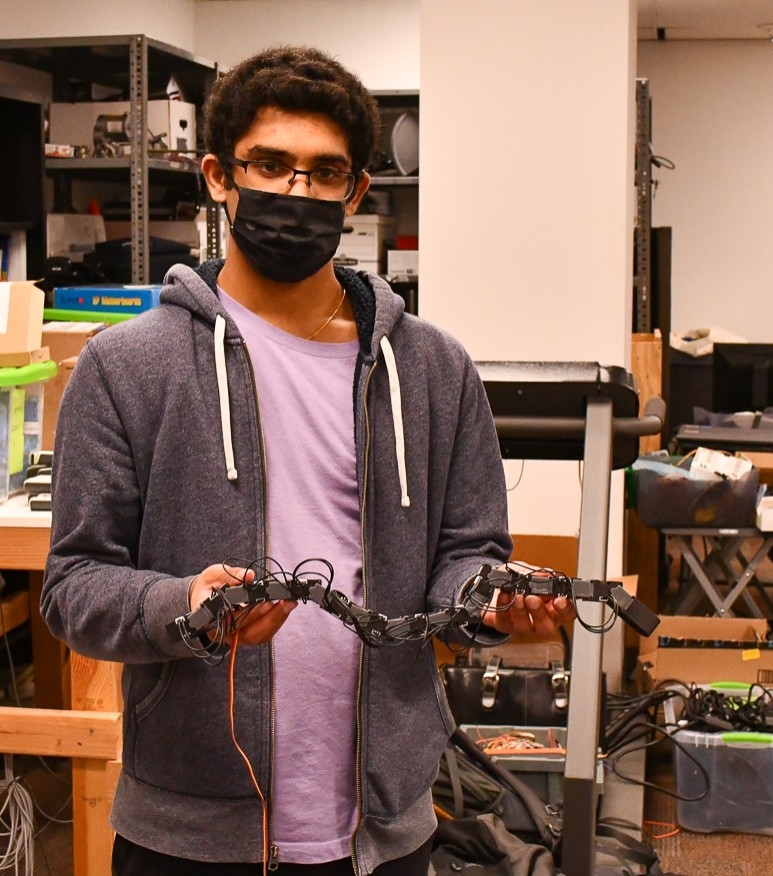
Students work on a snake-inspired robotics project as part of UC's Biology Meets Engineering class. Another three-week class begins in June. Photo/Michael Miller
UC biologist Bruce Jayne, who studies snake movement and predation strategies, explained to the students how the robot’s lateral undulation compares to the motion of real snakes.
“The key thing to understanding the different ways snakes move is that by having different strategies, they can move in diverse circumstances,” Jayne said. “The demands of moving within the confines of a tunnel are different from moving in soft sand.”
Snakes move in several common ways that scientists have described as rectilinear, lateral undulation, sidewinding or concertina. Jayne has described and documented each of these ways in detail in his lab for research that has proven critical in developing strategies to thwart invasive species such as brown tree snakes that are threatening native birds in places like Guam.
Jayne and his research partners last year described a fifth method of snake movement completely new to science called lasso locomotion that allows some snakes to climb wide cylinders.
“That was such a bizarre way of moving. Holy smokes,” he said. “When you talk about biologically inspired design or biomimicry, if you wanted to climb a wide cylinder, would you ever come up with that?”
Students programmed their snakes to navigate channels of different widths that both constricted their movement and provided traction against the snake’s robotic coils to propel it forward.
Rollmann said there hasn’t been a better time to study biology.
“There are so many exciting innovations occurring in biology, from genetics to ecology and career options from industry to academia to medicine,” she said.
This year the program is offering paid internships to students.
The course appeals to students who appreciate robotics and animals — or both in Nikhil Gunda’s case. The senior at William Mason High School said he plans to study engineering in college. But he is equally fascinated by animals and biology.
“Animals have been a passion of mine since I was a child. My parents bought a membership to the Cincinnati Zoo so I can go all the time,” he said. “At this point, I probably know more about the different ways that snakes move than about programming a robotic snake.”
Featured image at top: Students in UC's Biology Meets Engineering class take part in an exercise on snake-inspired robotics. Another class begins in June. Photo/Michael Miller
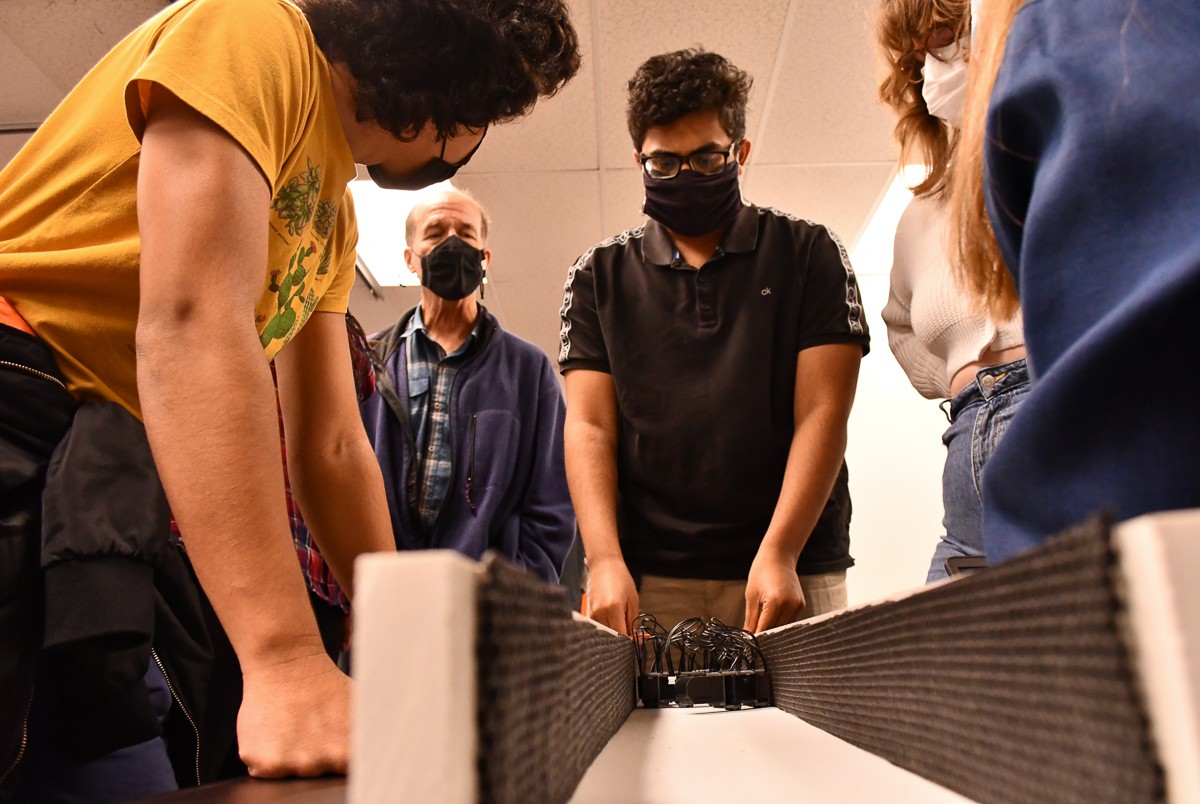
With the help of snake expert and UC biology professor Bruce Jayne, center, students in UC's Biology Meets Engineering course program snake robots to navigate channels of different widths for an exercise on snake-inspired robotics. Photo/Michael Miller
Become a Bearcat
Whether you’re a first-generation student or from a family of Bearcats, UC is proud to support you at every step along your journey. We want to make sure you succeed — and feel right at home.
Related Stories
IMPACT Innovation at IDD Education center celebrates milestone
April 11, 2025
The IDD Education Center’s IMPACT Innovation program celebrates a major milestone as associate Haley secures a position at Adrian Durban Florist. Through hands-on training, mentorship, and community partnerships, IMPACT Innovation helps adults with autism develop independence, communication, and workplace skills. Haley’s mother shares how the program has supported her daughter's growth, while program director Genna Kieper highlights the role of job coaching in Haley’s success. Adrian Durban Florist, a long-time partner, continues to be a champion. The IDD Education Center remains committed to expanding employment opportunities for individuals with disabilities.
UC Journalism to host Hall of Fame, Young Alumni Awards
Event: April 24, 2025 6:00 PM
The College of Arts and Sciences’ journalism department will host the Hall of Fame and Young Alumni Awards to celebrate the achievements and accomplishments of its graduates. Induction into the UC Journalism Hall of Fame is a special honor reserved for UC alumni who have excelled in the profession of journalism and media, or individuals who have made a significant contribution to journalism at UC.
University launches UC Futures: Rural & Small-Town Scholars...
April 2, 2025
The University of Cincinnati has launched a new program to help introduce students in rural communities to the urban campus environment and support their next steps into higher education.
